
People
The Oscar-Winning Director of ‘The Lives of Others’ on How the Life of Gerhard Richter Inspired His New Art-Themed Thriller
The director Florian Henckel von Donnersmarck went to great lengths to accurately capture the feeling of creative foment in postwar Germany.
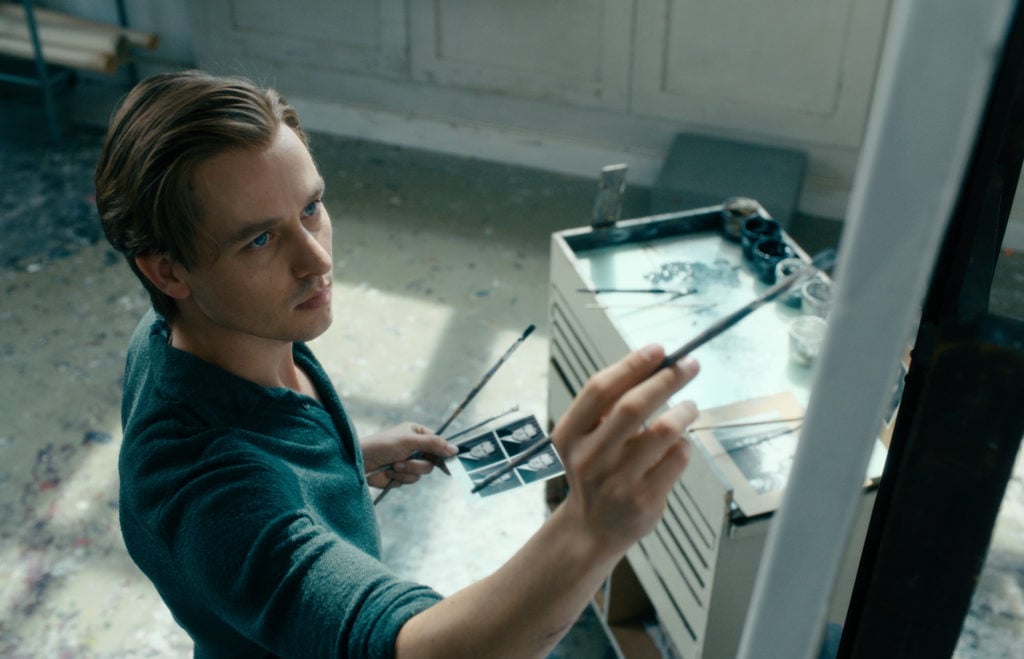
He chronicled agents of the Stasi in the 2006 Oscar-winning film The Lives of Others and a British spy on the run in the (significantly less celebrated) 2010 film The Tourist. But director Florian Henckel von Donnersmarck’s latest thriller follows the life not of a jet-setting double agent, but of an artist.
The new film, Never Look Away, explores one of the most tumultuous times in Germany’s history through the eyes of the fictional young German artist Kurt Barnert (played by Tom Schilling). The story is based on the life of superstar painter Gerhard Richter and follows him as he grows up in Nazi Germany, navigates the tumultuous postwar period under the GDR dictatorship, and eventually comes of age in West Germany.
When Barnert falls for the fashion student Ellie Seeband (played by Paula Beer) at the art academy of Düsseldorf, the girl’s disapproving father, the doctor Carl Seeband (Sebastian Koch), does everything in his power to drive the young couple apart. Little do the doctor and artist know, their fates are linked by terrible crime Seeband committed many years ago. (Don’t worry, Richter fans—that part is entirely fictional.)
At over three hours, the epic film explores the complexities of life in postwar Germany through the lens of the artists grappling with how to address the country’s’s horrific recent past.
Why did the Academy Award-winning director choose art as the foundation of his latest movie? The director has a rich understanding of German art and admits that he would have liked to be a collector if he didn’t invest so much time and money into his movies (though he has amassed a modest African tribal art collection).
Ahead of the November 30 American release of his movie, which was just nominated as Germany’s entry for best foreign language film at the Academy Awards, von Donnersmarck explains his fascination with the intersection of art and history, the role the real Richter played in the film, and why he isn’t interested in traditional biopics.
What is the movie about?
On the simplest level, the movie is about a father-in-law who wants to destroy his son-in-law because he thinks he is not worthy of his daughter. On another level, it’s about a young artist who’s trying to find his voice and falls in love with a fascinating young woman who is a fashion design student.
In a way, it’s also about the story of modern and contemporary art in Germany, beginning with the degenerate art exhibition in 1937, which we show in the movie, right through to the postwar movement in German art, when Germany had to reinvent its artistic tradition to make a clean break with everything that came before. Many artists, including those that were active in Düsseldorf in the 1960s, had to find a whole new artistic language.
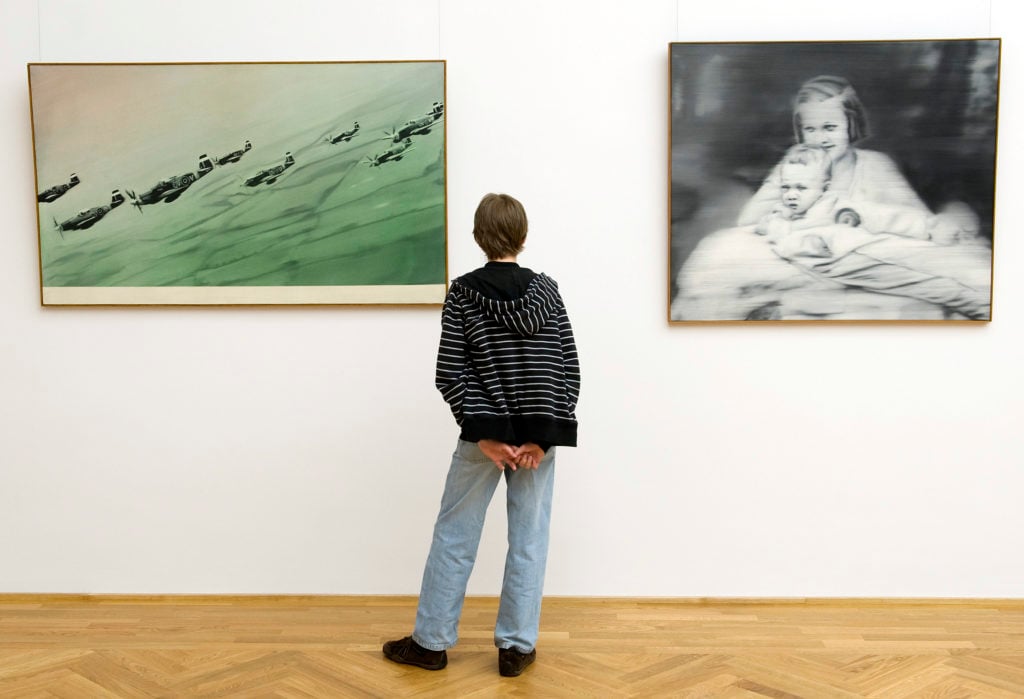
A visitor looks at the painting Tante Marianne (1965) by German artist Gerhard Richter at the Galerie Neue Meister of the Albertinum museum of the Staatliche Kunstsammlungen Dresden. Photo: ROBERT MICHAEL/AFP/Getty Images.
Even though his name is not used, the film is based on the life of Gerhard Richter. Why did you choose him as your subject?
It’s inspired by elements from Gerhard Richter’s life, but it’s not directly his life. What fascinated be about the life of Gerhard Richter was that you have a victim of the Nazi regime, whose aunt was murdered by the Nazis, and one of the greatest Nazi criminals living under one roof. That was the reality of Germany after 1945. You had the Nazis and the victims of the Nazis living together in one country, having to rebuild this country together. I found Richter’s story was a really fascinating way to show that.
I had known about this great painting Tante Marianne (1965), which was originally called Mother and Child because [Richter] didn’t want to talk about the personal relevance. Later, Richter explained that this was his aunt and he renamed the picture Aunt Marianne. It became known that the beautiful woman who is depicted holding this little child was his mother’s younger sister, and that the child was him. This woman became schizophrenic and was brought to a psychiatric asylum. Eventually when the Nazis took over, she was murdered under the Nazis’ so-called euthanasia program.
I had known this story. But what had not been known to anyone until the journalist Jürgen Schreiber from [the German daily newspaper] Tagespiegel discovered it in the early 2000s, was that the woman that Gerhard Richter ended up marrying, and with whom he had a child, was the daughter of a high-ranking SS doctor who was in charge of over 900 forced sterilizations under the Nazis. This is a person that Richter had painted several times. There’s a really interesting painting, Familie am Meer (1964), of his father-in-law and his family enjoying a seaside holiday that’s based on a photograph taken around the exact time of his aunt’s suffering. I found this story, and this premise, really interesting, and I thought it would make for an interesting movie.
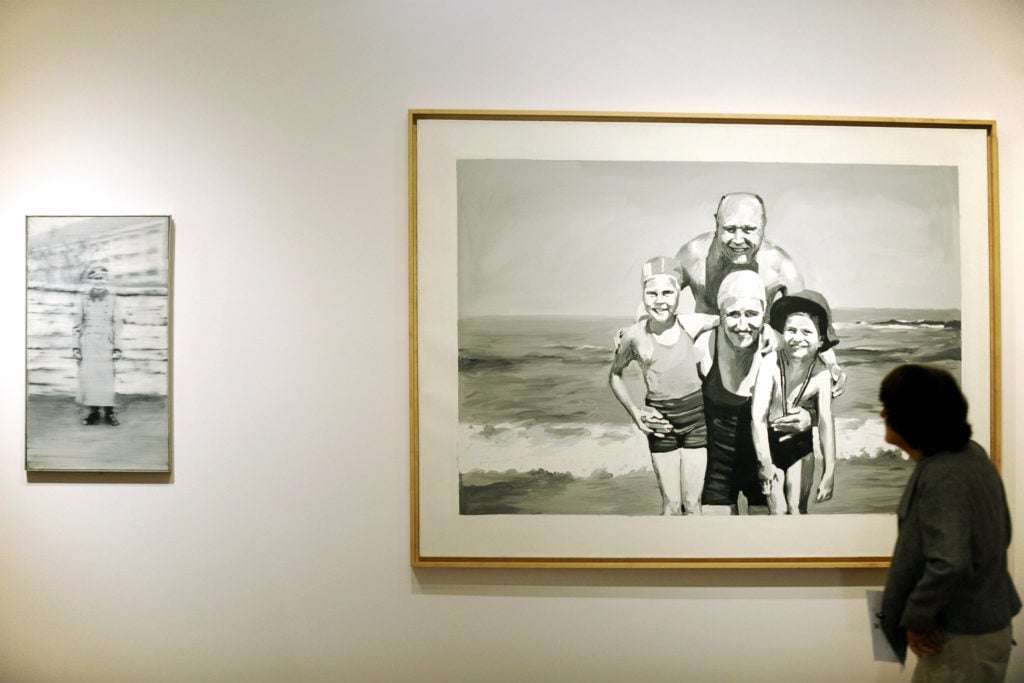
A woman walks past the work Familie am Meer (1964) by German artist Gerhard Richter at the exhibition “Kunst und Kalter Krieg – Deutsche Positionen 1945-1989” (Art and Cold War – German positions 1945-1989) in Berlin. Photo: AXEL SCHMIDT/AFP/Getty Images.
How historically accurate is the movie? Are there areas where you decided to embellish a little bit?
Oh, for sure. I don’t like biopics per se, because they stay completely true to the facts and then they’re subject to all the coincidences and messiness of real life, and they mostly don’t make for very interesting films. Or they take all the liberties and still claim to be a biopic, and then it’s just misleading. So I prefer to do a mixture of fact and fiction, similar to the genre that [German novelist] Thomas Mann worked in.
In American cinema, it’s similar to something like Citizen Kaine for instance, which is based on the life of William Randolph Hearst. Even though the movie is about the life of a big mogul who built a media empire, I would find it a lot less interesting if it was called Citizen Hearst, because I want the drama.
In German, the word for fiction, Dichtung, is the same word as for density and poetry. So I like to take reality and compress it into something more dense, but not an exact copy of the facts.
You strike a very good balance between the film’s main plot points: First, there’s Germany’s history under the Nazis and the postwar period under the GDR. Second, art history. And third, a powerful personal story. How did you roll these three areas into one?
The reason I was so excited by the story that Jürgen Schreiber discovered was that it allowed me to link a personal story to art history, which is again linked to world history.
At the time in which the film takes place, the whole world was divided into an Eastern and Western bloc. Germany as a country was divided into an Eastern and Western bloc, and within Germany, there was city that was again divided into an Eastern and a Western bloc. It’s like a game of Russian dolls.
I went a step further into a family where you had victims and murderers living under one roof. It’s a story that is, unfortunately, a uniquely German thing. I think the reason why German art is so incredibly present on the world stage is because our country has been through so much craziness and caused so much extremity that German personal stories often reflect world history, which is very unique.
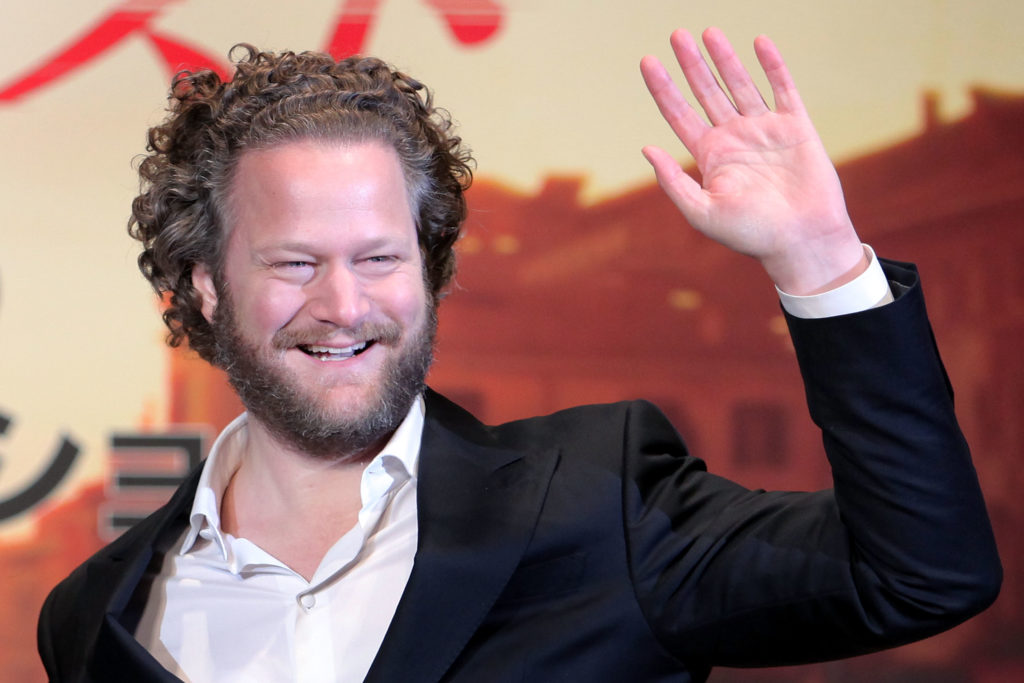
Director Florian Henckel von Donnersmarck. Photo: Kiyoshi Ota/Getty Images.
There’s one line I want to focus on. The character that plays Joseph Beuys says, “never choose a political party, choose art.” At a time when global politics is moving to the right, do you think it’s appropriate for art to remove itself from politics completely? And I don’t mean just visual art, but also film.
I think that if you make truly personal art, it will also reflect your political position. And I don’t just mean the party you support, but your general stance in life. And therefore, if that art is seen, it will hopefully have a political impact. But personally, I don’t like art that puts itself in the service of politics, even if it’s for a cause that I think is right. I always found it a little bit ridiculous when someone like [German novelist] Günter Grass would go on a talk show with [former German chancellor Gerhard] Schröder or [German political leader Willy] Brant to advocate for a political party.
At the end of the day, art has to seek a much, much greater truth than what a political party—which has to cater to the lowest common denominator—can hope to achieve. We should have much higher standards. For example, let’s say there was a political message that I really wanted to convey, and I wanted to create a story that reflects that political message. Films like that, which I’ve seen, are always terrible.
I think it was John Ford who said that if you want to send a message, go to Western Union. At the end of the day, even the films by John Ford very clearly reflect what his message is, and what he thinks of mankind. Art should shape the political landscape by being a higher influence on politicians and on the electorate.
It’s also really pointless. I remember there was a very self-righteous campaign of art people speaking out against a certain politician. My brother sent me a petition and made the point that this politician is now more likely to get elected. It almost has a contrary effect, because most people reject these snobs who are trying to tell us what to think.
I really enjoyed the scene where the character playing artist Günther Uecker takes the character playing Richter around the art academy of Düsseldorf and he sees all this crazy art being made. For me, it really demonstrated all of the pent-up creativity that was unleashed after years of dictatorship, during which artists were forced to paint in a certain style and were prosecuted if they painted differently. Who did you consult to develop this sensibility?
We consulted so many people. We had the full cooperation of the art academy of Düsseldorf and in Dresden. We had so many artists on board. I don’t know of any other film that employed as many artists as we did—certainly not German films.
From the beginning, even in the script phase, I consulted artists. I live in Los Angeles at the moment, which, as you know, has become a global center for contemporary art. One of my closest friends there is [German photographer] Thomas Demand, who helped me greatly. And we had Andreas Schön onboard, who was Richter’s student and worked as his assistant for eight years, to paint all of the artworks you see in the movie. We also had many great artists who worked under these exact people visit us on set, including Andreas Gursky and Albert Oehlen. I also regularly see David Hockney in Los Angeles and we talk about art and film and how they interact, something he is very active in.
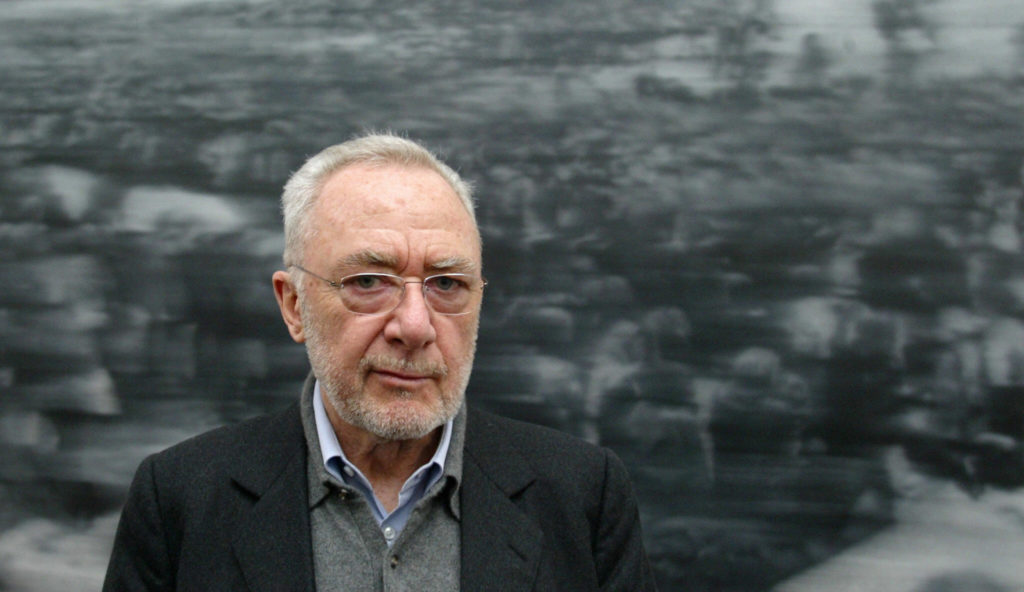
Germany: German artist Gerhard Richter. Photo: NORBERT MILLAUER/AFP/Getty Images.
Did you speak to Gerhard Richter?
Oh, yes. I spent weeks with Richter. I wrote to him and told him I had this film idea, and he invited me to Cologne. I thought I’d get an hour, but I ended up staying for weeks. We even went to Dresden for a few days and he showed me all the places from his childhood. He also let me record all the conversations, which really helped me. I think he spoke so openly specifically because it wasn’t a biopic. He knew I would change the story into something that was inspired by some elements from reality, but that wasn’t reality.
To what extent did you instruct the actors to portray the people their characters are based on?
I didn’t want to be limited by the reality of who each person was. For instance, I never instructed Tom Schilling to act like Gerhard Richter, because I wanted him to interpret the role how he wanted.
But I think I chose actors, maybe subconsciously in part, who had a certain similarity in spirit to those people. For instance, the actor who plays the character inspired by Joseph Beuys, Oliver Masucci, he’s from the same region [as Beuys]. He’s someone who was immensely inspired by the life and thinking of Beuys. I didn’t know all that when I cast him, but maybe something drew me to him.
Tom Schilling was someone who for many years wanted to be a professional painter, and so he was very skilled at drawing and painting, which helped make the film more accurate. He took a year to prepare for the film and we sent him to [artist] Anselm Reyle’s painting class in Hamburg. We wanted him to get a feel for how young artists interact with one another and what the classes are like. He even spent a few days with a frame-maker to learn how to mount canvasses. It’s not super difficult, but if he knows how to do it, it will look better when he does it in the film.
Follow artnet News on Facebook:
Want to stay ahead of the art world? Subscribe to our newsletter to get the breaking news, eye-opening interviews, and incisive critical takes that drive the conversation forward.
SHARE

No comments:
Post a Comment